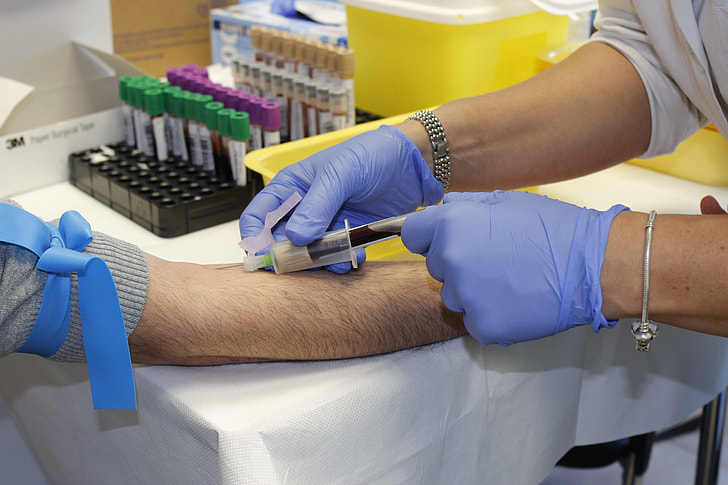
Disposable gloves are everywhere—in labs, food plants, and healthcare facilities—but in industrial environments, their misuse is a leading cause of injuries. Many assume that nitrile or latex disposables can handle chemical exposure or mechanical hazards, only to face accidents and compliance penalties. This guide explores when disposable gloves are acceptable, when they are dangerous, and how to avoid costly mistakes.
Disposable gloves (nitrile, latex, vinyl) are designed for low-risk tasks like hygiene, food handling, and splash protection—not prolonged chemical or mechanical hazards. OSHA 1910.138 and EN 374 require selecting gloves based on task risk, chemical compatibility, and exposure time. Disposable gloves should never replace heavy-duty PPE for high-risk work.
Why Disposable Gloves Are Common—but Risky in Industry
- Speed and convenience make them popular for short tasks.
- Used in pharma, cleanrooms, food prep, and labs for contamination control.
- Misuse is rampant—70% of chemical hand injuries involve disposables inappropriately used for strong chemicals or immersion tasks.
Real-World Incidents Expanded:
Case #1 – U.S. Chemical Lab:
A technician wore 4-mil nitrile gloves while cleaning glassware with acetone. Permeation occurred in under 30 seconds, leading to dermatitis and medical leave. Company paid $12,000 in treatment costs and faced a compliance review. Correct solution: Butyl or laminated gloves for solvents.Case #2 – Canadian Food Processing Plant:
Vinyl gloves were used during cleaning with caustic soda solution. Mid-task, gloves degraded, causing 2nd-degree burns on both hands. Production stopped for 36 hours, costing $48,000 in downtime. The fix? Switch to EN 374-certified neoprene gloves for sanitation.Case #3 – Automotive Workshop, UK:
A mechanic used nitrile gloves for brake cleaner containing toluene. After 2 hours, the chemical penetrated, causing systemic exposure and hospitalization. Audit revealed zero chemical compatibility checks. OSHA fine: $8,200; corrective actions included staff retraining.Case #4 – Pharmaceutical Packaging:
Workers double-gloved with nitrile for ethanol-based cleaning, assuming extra layers meant full safety. Permeation still occurred, causing skin dryness and contamination risk. Correct PPE: long-cuff neoprene or PVA gloves for repeated exposure.
Comparing Disposable Glove Materials
| Material | Advantages | Limitations |
|---|---|---|
| Nitrile | Stronger than latex, oil-resistant, chemical splash protection | Fails against strong ketones and chlorinated solvents |
| Latex | Excellent fit and tactile sensitivity | Allergen risk, poor solvent resistance |
| Vinyl | Low cost, suitable for short food handling | Tears easily, minimal chemical resistance |
Advanced Buyer Notes:
- Thickness matters: 3–4 mil gloves offer minimal protection; 8–10 mil nitrile can withstand longer exposure but still not suitable for aggressive solvents.
- Consider textured fingertips for better grip in oily or wet conditions.
OSHA & EN Standards for Disposable Gloves
- OSHA 1910.138: Requires gloves chosen based on identified hazards, not convenience.
- EN 374: Certifies chemical resistance, but most disposables do not meet immersion resistance requirements.
- EN 455: Governs medical disposables (barrier integrity, not industrial chemical exposure).
When Are Disposable Gloves Safe Enough?
✔ Food handling and light hygiene tasks
✔ Short-duration lab work with low-risk chemicals
✔ Cleanroom contamination control in electronics or pharma
Never use disposable gloves for:
- Strong acids, ketones, chlorinated solvents
- Hot work, welding, or cutting operations
- Prolonged chemical immersion or abrasive handling
Common Buyer Mistakes Expanded
- Assuming “nitrile = chemical-proof” without checking chemical compatibility charts.
- Using latex gloves in solvent-heavy environments, leading to permeation and allergic reactions.
- Ignoring expiration dates—old gloves lose elasticity and barrier strength.
- Not stocking multiple glove sizes, resulting in poor fit and compliance issues.
The Real Cost of Wrong Choices
- Injury treatment: $8,000–$25,000
- OSHA fine per violation: up to $15,625
- Production downtime: 1–3 days per incident
- Contract risks: Non-compliance can void food safety certifications (e.g., HACCP, BRC).
Audit Insight: In 2023, 42% of PPE citations in food and chemical sectors were related to improper glove use.
Quick Procurement Checklist
- [ ] Identify tasks: splash vs immersion vs hygiene
- [ ] Match glove material to specific hazard (check SDS)
- [ ] Confirm thickness and permeation data
- [ ] Stock powder-free options for cleanroom or food compliance
- [ ] Implement training on glove limitations
- [ ] Maintain an inventory system for expiration tracking
Buyer FAQ
Q: Can thick nitrile disposables replace chemical gloves?
A: No. Even 8–10 mil nitrile gloves break down with strong solvents like acetone or toluene.Q: Are double gloves safer for chemicals?
A: Only for mild hazards or splash—not for immersion or prolonged exposure.Q: Do disposables need certification for food use?
A: Yes. Look for FDA, EU Food Contact, or EN 1186 compliance.
Additional Buyer Insights
- Use color-coded systems to separate glove use (e.g., blue for food, black for automotive).
- For cleanrooms, select low-particulate, powder-free nitrile gloves.
- Always request chemical resistance charts from suppliers to avoid compatibility mistakes.
Conclusion
Disposable gloves are great for hygiene and short, low-risk tasks—but they are not suitable for heavy chemical exposure, heat, or mechanical hazards. Buyers should rely on hazard assessments, standards compliance, and compatibility charts to make the right choice.
Need FDA and EN 374-certified disposable gloves with bulk supply options?
📩 Email: [email protected]
🌐 Website: www.workwearsolutions.net
Zion Zhang
Recent Posts
 Fatigue-Monitoring Smart Vests2025年12月23日Data-Driven Fatigue Prevention for Food Processing and Cold […]
Fatigue-Monitoring Smart Vests2025年12月23日Data-Driven Fatigue Prevention for Food Processing and Cold […] 100-Wash Antimicrobial Durability: Long-Lasting Hygiene Protection for Food and Healthcare Industries2025年12月20日Food processing plants and healthcare facilities are […]
100-Wash Antimicrobial Durability: Long-Lasting Hygiene Protection for Food and Healthcare Industries2025年12月20日Food processing plants and healthcare facilities are […] Future Reflective Materials: Adaptive Visibility for High-Mobility and High-Risk Work Environments2025年12月19日Modern industrial workplaces are evolving rapidly. […]
Future Reflective Materials: Adaptive Visibility for High-Mobility and High-Risk Work Environments2025年12月19日Modern industrial workplaces are evolving rapidly. […] Next-Gen FR Fabrics: Lighter, Softer, and More Durable Flame-Resistant Workwear for Long Shifts2025年12月18日For decades, flame-resistant (FR) workwear has been […]
Next-Gen FR Fabrics: Lighter, Softer, and More Durable Flame-Resistant Workwear for Long Shifts2025年12月18日For decades, flame-resistant (FR) workwear has been […] Nano-Coatings Reduce Washing Frequency: Smarter Workwear for Cleaner, More Efficient Operations2025年12月17日Industrial workwear is no longer evaluated solely on […]
Nano-Coatings Reduce Washing Frequency: Smarter Workwear for Cleaner, More Efficient Operations2025年12月17日Industrial workwear is no longer evaluated solely on […] Self-Healing Fabrics: The Future of Durable Protective Workwear in Extreme Industries2025年12月16日Self-healing fabrics represent one of the most […]
Self-Healing Fabrics: The Future of Durable Protective Workwear in Extreme Industries2025年12月16日Self-healing fabrics represent one of the most […]
CONTACT US
- Feel free to contact us any time. We will get back to you as soon as we can!
- +86-17330061805
